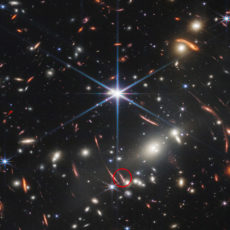
NASA’s James Webb Space Telescope captures a stunning new image of the Sombrero Galaxy using its MIRI (Mid-Infrared Instrument), also known as Messier 104, located 28 million light-years from Earth in the constellation Virgo.
What makes this new image different from those taken by Hubble and Spitzer is that Webb’s MIRI detects carbon-containing molecules called polycyclic aromatic hydrocarbons. This can indicate the presence of young star-forming regions, but unfortunately, the Sombrero galaxy is not a particular hotbed of star formation. Why? The Sombrero galaxy’s rings produce less than one solar mass of stars per year, in comparison to the Milky Way’s roughly two solar masses a year.
- Superior Optics: 400mm(f/5.7) focal length and 70mm aperture, fully coated optics glass lens with high transmission coatings creates stunning images...
- Magnification: Come with two replaceable eyepieces and one 3x Barlow lens.3x Barlow lens trebles the magnifying power of each eyepiece. 5x24 finder...
- Wireless Remote: This refractor telescope includes one smart phone adapter and one Wireless camera remote to explore the nature of the world easily...
Also within the Sombrero galaxy dwell some 2,000 globular clusters, collections of hundreds of thousands of old stars held together by gravity. This type of system serves as a pseudo laboratory for astronomers to study stars — thousands of stars within one system with the same age, but varying masses and other properties is an intriguing opportunity for comparison studies,” said the NASA Webb Mission Team.













